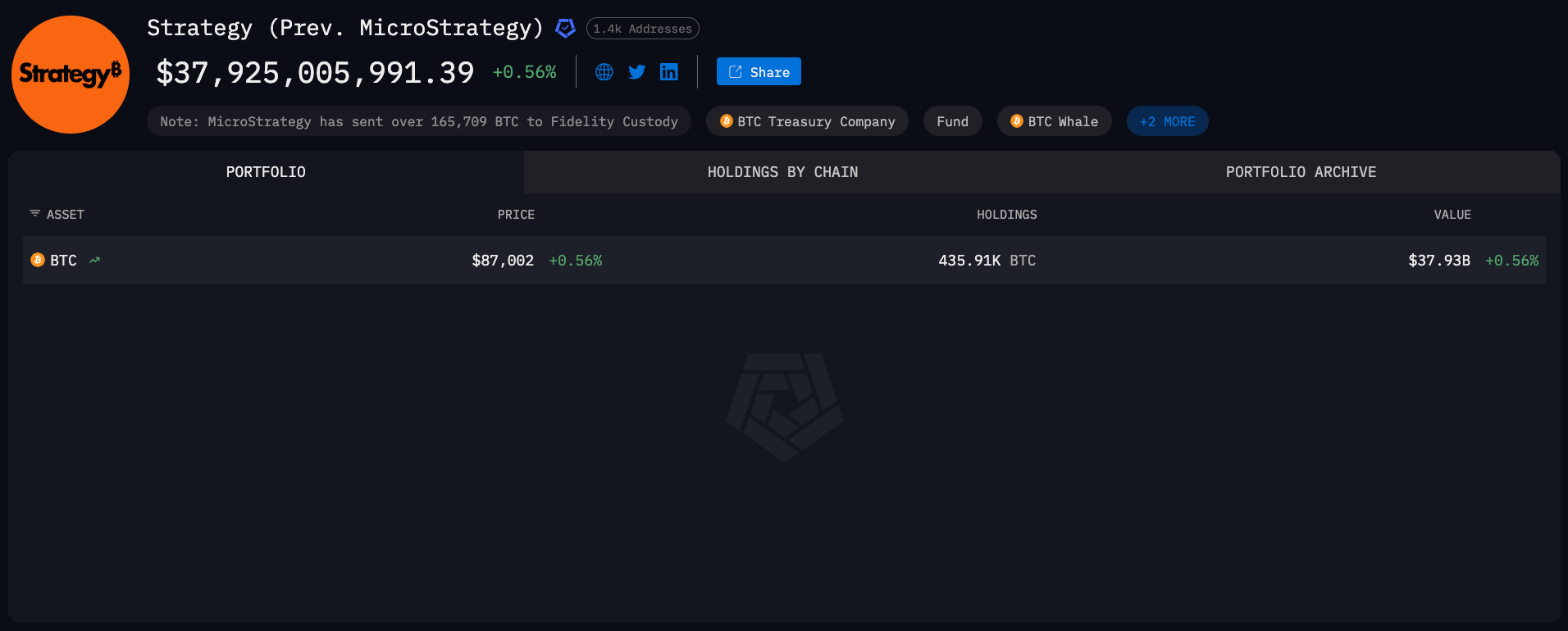November 26, 2025
at
6:15 pm
EST
MIN READ
Strategy Moved $5.1B BTC From Coinbase to Fidelity Custody - What It Means

Over the past two months, Strategy (formerly MicroStrategy) has shifted nearly 60,000 BTC from Coinbase to Fidelity Custody. The firm – currently the world’s largest crypto treasury company – holds a total of approximately 650,000 BTC.
Of note, Fidelity Custody uses an omnibus system, in which their clients’ assets are mixed together. This means that on the Arkham Intel Platform, some more of Strategy’s BTC holdings will be attributed to the Fidelity Custody entity.
The Fidelity Custody entity currently holds around 427k BTC and is the sixth largest crypto-holding entity on the Arkham Intel Platform with total holdings of $40 billion.

Fidelity Custody is the main custody solution for Fidelity’s spot Bitcoin ETF: FBTC. FBTC is the second-largest crypto ETF with over $17 billion AUM. For a full guide to crypto ETFs, read our analysis here.
Strategy’s decision to diversify its BTC custody comes at a nerve-wracking time for Bitcoin Bulls. Strategy’s mNAV has been steadily declining with the company’s market cap now below the value of its BTC stack.

However, Saylor himself has insisted that Strategy is not in any danger and the company can withstand volatility. He said “volatility is Satoshi’s gift to the faithful” in an interview with CoinDesk yesterday.
According to the FT, the company faces a liquidity test next month, with $120 million in preferred stock obligations coming due. Strategy’s third-quarter report showed it held just $54 million in cash – not enough to cover its obligations.
To rectify this, the company raised €620 million by selling preferred stock to European investors. This move solves the immediate liquidity issue, giving Strategy a fresh, massive pile of capital to pay back the $120 million next month and to continue buying more Bitcoin.
Strategy’s switch to an omnibus system is likely to cause a stir, as it effectively blinds the community to the company’s specific holdings. Theoretically, this opacity allows Strategy to sell Bitcoin without triggering immediate alerts, as trades can be executed via OTC desks or settled off-chain without necessarily being clearly shown on-chain.
However, observers should always exercise caution with on-chain and off-chain transfers: a transaction leaving a Strategy wallet does not automatically confirm a sale. As seen recently, these movements are often just operational housekeeping like wallet rotations or transfers between custodians.
For a full explanation of how to properly perform on-chain analysis, read our guide here.









































































































































































































































.png)